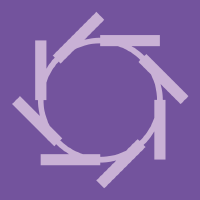Topic Menu
► Topic MenuTopic Editors

Ghost Imaging: From Quantum to Artificial Intelligence
Topic Information
Dear Colleagues,
Ghost imaging is an alternative to conventional image capture with digital cameras, which can achieve greater sensitivity and/or resolution than classical optics utilizing correlation measurement. Ghost imaging has been demonstrated both with quantum light and classical light sources. It has been quickly adapted to other fields, including time domain imaging, X-ray imaging, THz imaging, and neutron imaging. In addition, with the advances in artificial intelligence, ghost imaging through deep learning has recently shown significant improvements in speed, resolution, and robustness. Recent developments in methods and techniques have made it possible to move from proof-of-principle to applications, such as biomedical imaging and earth and space science. Our intention is to present a variety of ideas, results, and discussions about ghost imaging in this issue. We hope this could be helpful to further research and practical applications of ghost imaging itself and research and practical applications in other fields.
Dr. Tao Peng
Prof. Dr. Yanhua Shih
Topic Editors
Keywords
- quantum imaging
- ghost imaging
- super-resolution imaging
- turbulence-free imaging
- remote sensing
- deep learning ghost imaging
Participating Journals
| Journal Name | Impact Factor | CiteScore | Launched Year | First Decision (median) | APC |
|---|---|---|---|---|---|

Entropy
|
2.1 | 4.9 | 1999 | 22.3 Days | CHF 2600 |

Instruments
|
- | 2.6 | 2017 | 28 Days | CHF 1400 |

Photonics
|
2.1 | 2.6 | 2014 | 14.9 Days | CHF 2400 |

Quantum Beam Science
|
1.3 | 2.8 | 2017 | 22 Days | CHF 1600 |

Quantum Reports
|
- | 3.3 | 2019 | 16.4 Days | CHF 1400 |

Sensors
|
3.4 | 7.3 | 2001 | 18.6 Days | CHF 2600 |

Preprints.org is a multidisciplinary platform offering a preprint service designed to facilitate the early sharing of your research. It supports and empowers your research journey from the very beginning.
MDPI Topics is collaborating with Preprints.org and has established a direct connection between MDPI journals and the platform. Authors are encouraged to take advantage of this opportunity by posting their preprints at Preprints.org prior to publication:
- Share your research immediately: disseminate your ideas prior to publication and establish priority for your work.
- Safeguard your intellectual contribution: Protect your ideas with a time-stamped preprint that serves as proof of your research timeline.
- Boost visibility and impact: Increase the reach and influence of your research by making it accessible to a global audience.
- Gain early feedback: Receive valuable input and insights from peers before submitting to a journal.
- Ensure broad indexing: Web of Science (Preprint Citation Index), Google Scholar, Crossref, SHARE, PrePubMed, Scilit and Europe PMC.


